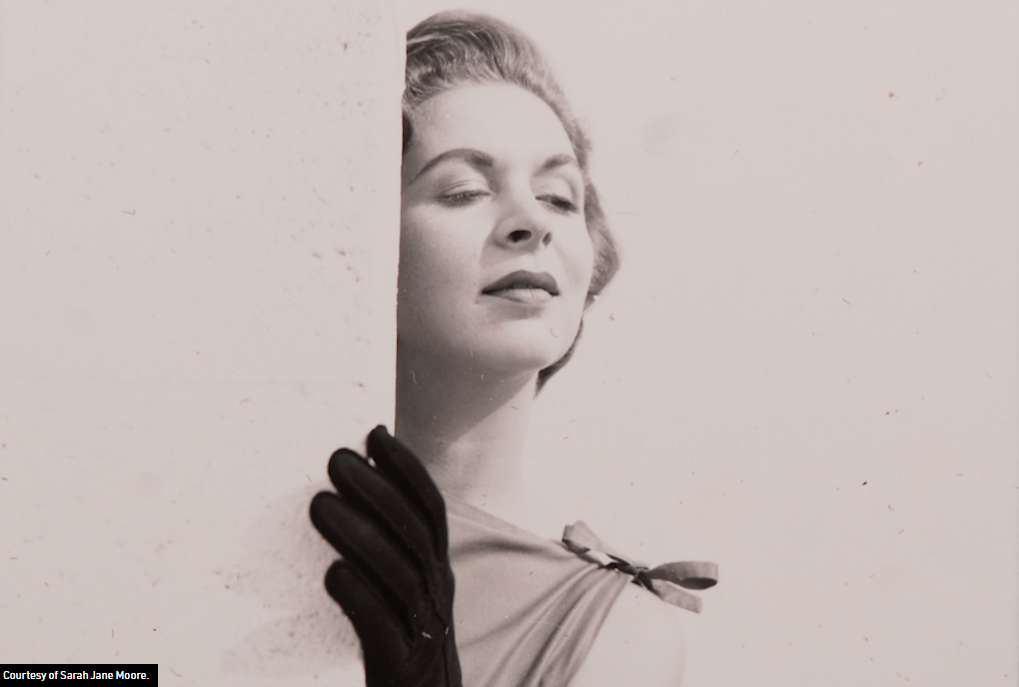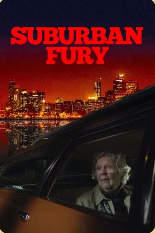Saturday, May 24, 2025
SIFF 2025 Dispatch #8: Cat Town, USA Celebrates a Sanctuary for Cats in Florida
Friday, May 23, 2025
SIFF 2025 Dispatch #7: Robinson Devor Profiles Sara Jane Moore, the Would-Be Presidential Assassin Next Door, in Suburban Fury
Tuesday, May 20, 2025
SIFF 2025 Dispatch #6: An Irish Girl Grows Up Fast in Claire Frances Byrne's Ready or Not
Monday, May 19, 2025
SIFF 2025 Dispatch #5: Josh O’Connor Narrates a Dreamy Portrait of Jean Cocteau
Saturday, May 17, 2025
SIFF 2025 Dispatch #4: Horror, Comedy, and Sisterhood Come Together in The Balconettes
Thursday, May 15, 2025
SIFF 2025 Dispatch #3: "Bad, Beautiful, and Bold as Sin!" in Jack Arnold's The Glass Web
THE GLASS WEB
(Jack Arnold, USA, 1953, 81 minutes)
"Blonde, Beautiful...and Born to Be Murdered!"--one of the lurid 1953 taglines
I wouldn't say that Jack Arnold's Universal noir, The Glass Web, an adaptation of TV writer Max Simon Ehrlich's novel Spin the Glass Web, is a lost classic, but any chance to see a film from the director behind 1954's Creature from the Black Lagoon and 1957's The Incredible Shrinking Man--a big favorite of the late Seattle Times critic John Hartl--on one of the biggest screens in town is a chance worth taking.
I'm not certain The Glass Web would score high marks from Czar of Noir Eddie Muller of TCM and Noir City fame, but it's a solid B-picture about ambitious actress Paula (Kathleen Hughes, who appeared in Arnold's It Came from Outer Space the same year), who has a cute orange tabby, so you know she isn't all bad, but her good qualities end there, since she's been using middle-aged bachelor Henry (Edward G. Robinson) for clout and married father Don (John Forsythe) for cash--the cat's propensity to nibble on electrical cords plays into the plot. Not to worry, the cat emerges unscathed, but things do not end well for two of these conniving characters.
If the basic setup is sufficiently compelling, Arnold's depiction of the live television era is sure to prove eye-opening to today's audiences. It doesn't get talked about much anymore, but it's how some of the finest filmmakers of the New Hollywood, like Arthur Penn and Robert Altman, got their start.
I don't know if co-writers Robert Blees and Leonard Lee took inspiration from an actual show, but it seems likely, and the unimaginatively-titled Crime of the Week predicts Law & Order, among other crime shows and podcasts, by dramatizing a ripped-from-the-headlines case each week--including one involving a cast member.
Forsythe, a dependable, if unspectacular actor who would find greater fame on TV in the 1970s and '80s, most notably on Charlie's Angels (as the voice of Charlie) and Dynasty, plays the guy who writes the episodes, while Robinson plays the researcher with an eye for detail--at least until Paula knocks him off his feet, and he loses all sense of reason. Like his paramour, Henry believes he's destined for better things, whereas Don is already living the American Dream, complete with Marcia Henderson's supportive spouse.
The actors are all quite good, including Richard Denning as the producer. Robinson would do even better work in more emotionally involving crime films, like John Farrow's Night Has a Thousand Eyes, but he always delivers, at least in my experience. As for Ms. Hughes, Bosley Crowther, in his original New York Times review, describes her character as a "dainty dish of poison." I'm not sure about that "dainty" part, but Paula is pretty poisonous indeed.
Like the show itself, the Continental Cigarette commercials, which feature an announcer puffing away like a chimney, are live (back in the 1980s, when I served as an intern at CBS News, there was plenty of smoking going on behind the scenes even as it had disappeared from screens by the 1970s).
It's the way things were done at the time, though it isn't simply about depicting a specific milieu, since both crime and solution tie into the production of the show, from the writing to the sound stages to the competition for better roles, both in front of and behind the camera, to the drive to keep a sponsor happy at all costs. No sponsor: no show.
Though I caught a 2D version of the film, SIFF attendees will get to enjoy the full effect of the objects that hurtle towards the camera during a mid-picture sequence. Granted, we're talking four brief moments squeezed into one to two minutes. Like the 3D version of Alfred Hitchcock's 1954 Dial M for Murder, which I caught at New York's Film Forum in 2004, it adds a little something extra to the picture, even if it has little to do with its themes.
Arnold would again turn to three dimensions for It Came from Outer Space and Creature from the Black Lagoon, the latter so popular that it spawned two sequels and inspired Guillermo Del Toro's 2017 Oscar-winning fantasy romance The Shape of Water. The 3D version of those films, however, reached more viewers than this one, making the screening of the restored 3D version of The Glass Web at SIFF Cinema Downtown a rare treat indeed.
The Glass Web plays SIFF Cinema Downtown on May 18 at 4:15pm. It's also available on Blu-ray with 3D glasses through Kino Lorber. Images from Deranged LA Crimes (vintage poster), DVD Beaver (Kathleen Hughes), and the IMDb (John Forsythe, Edward G. Robinson, and Richard Denning).
Tuesday, May 13, 2025
SIFF 2025 Dispatch #2: Sinéad O'Shea Offers a Vibrant Profile of Edna O'Brien in Blue Road
Monday, May 12, 2025
SIFF 2025 Dispatch #1: Four Mothers with James McArdle and Fionnula Flanagan
Much like the Seattle International Film Festival's 50th anniversary edition, which opened with Josh Margolin's Thelma, SIFF's 51st edition opens on May 15 with another crowd-pleasing, cross-generational comedy, though this one has less of an action-adventure element. This time the setting is Dublin, the younger man is gay, and the indomitable Fionnula Flanagan is in the mix.





































